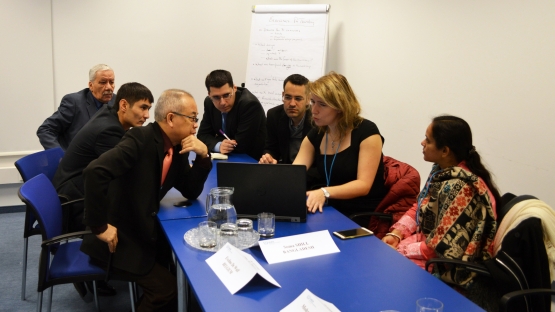The need for research reactor operators and regulators to
apply a systemic approach to safety that takes into consideration
interaction among all human, technical and organizational (HTO) factors
was underlined at an IAEA workshop held this month in Vienna.
The workshop’s 24 participants from operating organizations and regulatory bodies in 21 countries discussed how to address such factors in an integrated manner that is incorporated into the management process. They also focused on how to assess, monitor and continuously improve management systems and ways to foster a strong safety culture using HTO factors.
The workshop formed part of work following the 2015 IAEA Report on the Fukushima Daiichi Accident, which observed that “in order to better identify plant vulnerabilities, it is necessary to take an integrated approach that takes account of the complex interactions between people, organizations and technology.” The report also recommended that a systemic approach that considers these interactions be taken through the entire life cycle of nuclear installations.
Workshop chair Duane Hardesty, Senior Project Manager at the U.S. Nuclear Regulatory Commission, said participants’ sharing of experience in relation to the interaction between human, technical, and organizational factors would help strengthen safety at research reactors.
Effective leadership for safety is vital, said Greg Rzentkowski, Director of Nuclear Installation Safety at the IAEA.
“It is necessary to reinforce the safety focus in optimizing the interface between all factors,” he said. “In this context, research reactors pose a unique challenge because they vary significantly in type and size, and often are faced with limited human resources.”
Research reactors are often used for research education and training, testing materials or the production of radioisotopes for medicine and industry.
The IAEA works with its Member States to continuously enhance the safety, operation and utilization performance of research reactors, including the development of safety standards and technical guidelines, conducting safety peer reviews and advisory services and organizing technical meetings, training courses and workshops.
The workshop’s 24 participants from operating organizations and regulatory bodies in 21 countries discussed how to address such factors in an integrated manner that is incorporated into the management process. They also focused on how to assess, monitor and continuously improve management systems and ways to foster a strong safety culture using HTO factors.
The workshop formed part of work following the 2015 IAEA Report on the Fukushima Daiichi Accident, which observed that “in order to better identify plant vulnerabilities, it is necessary to take an integrated approach that takes account of the complex interactions between people, organizations and technology.” The report also recommended that a systemic approach that considers these interactions be taken through the entire life cycle of nuclear installations.
Workshop chair Duane Hardesty, Senior Project Manager at the U.S. Nuclear Regulatory Commission, said participants’ sharing of experience in relation to the interaction between human, technical, and organizational factors would help strengthen safety at research reactors.
Effective leadership for safety is vital, said Greg Rzentkowski, Director of Nuclear Installation Safety at the IAEA.
“It is necessary to reinforce the safety focus in optimizing the interface between all factors,” he said. “In this context, research reactors pose a unique challenge because they vary significantly in type and size, and often are faced with limited human resources.”
Research reactors are often used for research education and training, testing materials or the production of radioisotopes for medicine and industry.
The IAEA works with its Member States to continuously enhance the safety, operation and utilization performance of research reactors, including the development of safety standards and technical guidelines, conducting safety peer reviews and advisory services and organizing technical meetings, training courses and workshops.












